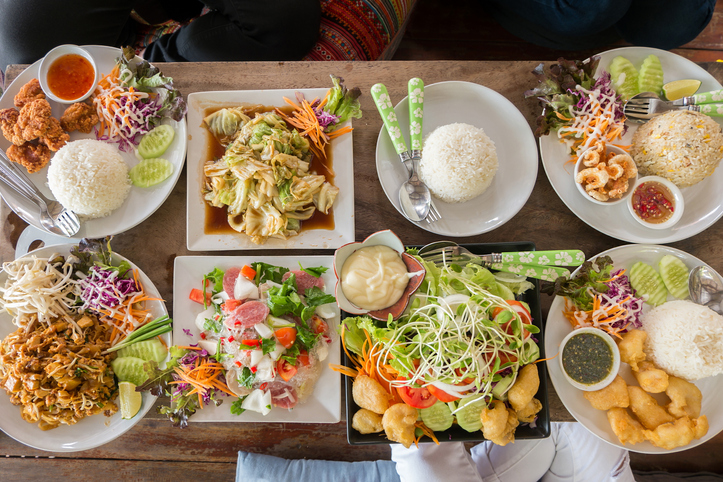Have you ever thought about how food impacts culture and helps define who we are? Not just what we eat, but how it is prepared and how we eat it. Is the food cooked over an open fire indoors, in a wok, a tajine, or stove? Do we eat with our hands, with chopsticks, or a fork and knife? All these components of preparing, serving, and eating food are a large part of culture. It is one of the most visible differences we encounter when we travel.
Food, like many aspects of culture, carries connotations that tell us why certain foods and manners of eating are more appropriate. For example, in older cultures, sitting on the floor to eat has been in existence long before chairs were invented, and it is believed that it is a better position for digesting food. Did you know there is a difference between chopsticks? Some have a square tip and others are very pointed. The difference is based on the type of rice grains grown in that country. Finer, smaller grains require a more pointed tip. Food is a representation of our cultural identity that requires some deeper insights.
For expatriates, food can trigger culture shock and home sickness. When I lived in Italy, I longed for a tasty hamburger and French fries. When I lived in Malaysia, I missed my Sunday family meals of spaghetti and meatballs. No matter where I lived or travelled there were certain foods I longed for, not just because of the taste, but because they represented comfort, safety, and predictability. The food reminded me of who I was and where I came from.
Many immigrants bring the food of their home country with them, as a way of preserving their culture. It is not unusual for them to open restaurants while enriching the local cuisine with new flavors and scents. In the movie, “The Hundred-Foot Journey,” French and Indian cultures collide as a successful French restaurant resists a new Indian restaurant which opens across the street only a hundred feet away. The resulting fusion of the two cuisines makes for a happy ending that can be a metaphor for cross-cultural understanding.
Food is the gateway to culture and helps us become more informed about others. When doing business internationally, a shared meal can build trust, start lasting relationships, and bridge cultural gaps. Being open to trying new foods from other cultures can broaden our horizons and introduce new flavors and new ways to enjoy the company of others when dining.
Written by Diane McGreal, Living Abroad Cultural Advisor

